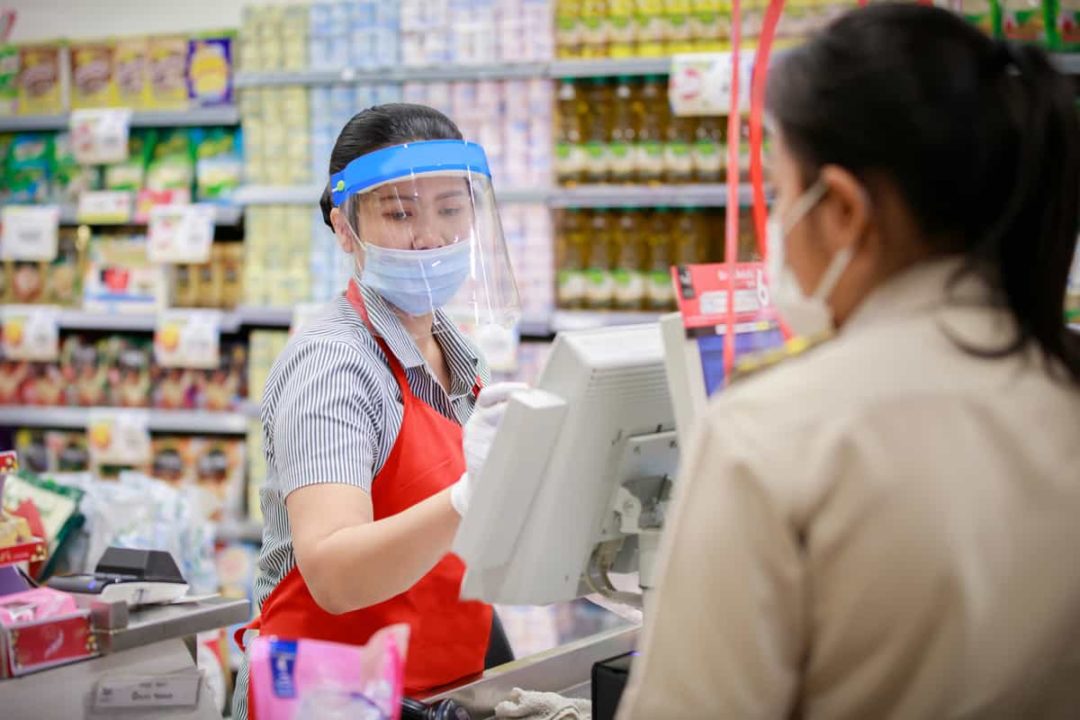Under normal circumstances, for you to have any hope of breaking through this protective mental shield, your message must be clear, consistent, and must persist over time. Think of Coca Cola, perhaps the most recognized brand in the world. Even so, to remind people to buy Coke, the company still advertises every day, in every country it sells.
An “inflection point”
There are abnormal moments in life when, due to major disruptive events such as marriage, a newborn, or a new house—something marketers call an “inflection point”—people’s minds are suddenly, if only temporarily, unguarded and open, primed to be receptive to outside influences. It is at these odd, infrequent moments in life when attitudes, behaviors, loyalties, and buying habits can change.Earlier this year with COVID-19, and continuing today, you watched as just such a disruptive moment came alive in your store, as customers—existing, new and renewed—came rushing in for essential immune-boosting products, and seeking, much more earnestly than ever before, expert advice about health and well-being.
We do not overstate the case to say, with the 2020 coronavirus pandemic, you have what marketers consider a once-in-a-lifetime chance to establish new, long-lasting, and deeper relationships with people who, were it not for this momentary, simultaneous worldwide disruption, would continue to be as impervious to your message as they had always been.
Reevaluating Value
Tracking these changes in consumer attitudes and behaviors around food and health is Bellevue, WA-based Hartman Group. Hartman makes a science of following consumers through their kitchens, and on their food-shopping trips, to find out exactly why they buy what they buy.According to these cultural anthropologists, in the decades leading up to the pandemic, consumers thought of “value” as almost a fixed equation; equal to thequalityof a product or service, plus thequantitythey wished to buy, plus theconvenienceof acquiring it, divided by the price. It was nearly an objective measure.
Post-COVID-19, there has emerged a new consumer value paradigm that is more subjective, messier, and emotional. The very real threat of personal, family, and community-wide illness has created a new imperative: to prevent and manage disease. But instead of relying on traditional medicine to treat disease once it has begun, people are intensely interested in pursuing a holistic, proactive approach to health that includes not only the physical, but emotional and mental well-being as well. Unlike before, consumers now have a strong desire—a need—to form a personal connection with the providers of the health-giving products and services they decide to purchase.
Spending is personal empowerment
Convenience and price, once supremely important, are taking a back seat to the concern, “What does this transaction mean to me?” No longer just a simple exchange of money for value; the act of buying has become an entire experience that must empower the consumer, making them feel good. The pandemic, according to Hartman, is prompting consumers to stop and ask questions before they buy, such as, “To what extent does this product or service reflect who I want to be in the world?” And, “Does this item or company demonstrate mindfulness of my community’s well-being?”The newly open consumer mind wants to know, “Do the ingredients, systems, and human factors in this product or service support the well-being of people, animals, and the planet?” And, “Does consuming this product or service support emotional and physical well-being?” And perhaps most urgently, “Are employees—especially those on the frontline, although often unseen, but essential to the food and beverage industry—taken care of, protected, and respected?”
A purchase today, of a product or service, is a vehicle for consumers to gain empowerment. When consumers decide to spend on services and products, they are doing so more conscientiously than before, demonstrating with their dollars that they are responsible not only for their own health and well-being, but also connected to and as equally responsible for the health and economic well-being of their community.
Immunity has never been more important
As a result of COVID-19, a significant shift is occurring in consumer buying preferences. According to Hartman, 31% of consumers report taking more supplements, and 29% report consuming more functional foods and beverages than before. Fears of contagion have brought quality assurance and safety to the forefront, with products and brands that promote these features enjoying enhanced differentiation and greater value.Many of the consumers purchasing higher-value, immune-boosting products, are doing so for the first time. Mainstream consumers, not just “core” natural products consumers, have been inspired to think about immunity more holistically and proactively; how products, ingredients and production methods can make them more resistant to—protected from—illness, environmental pathogens, and lifestyle stressors. These consumers express their purchase motivations as a desire forresilience.
Good news for premium natural organic
Because of the COVID-19 immune-health imperative, many consumers see natural and organic products as essential, delivering superior ingredient quality, safety, health, and vitality. Recent research finds 23% of adult consumers are buying more natural organic products than before the pandemic.Price considerations have not undermined the desire for products and brands that offer unique health, taste, discovery, and personalization. In reconsidering value, consumers are asking, “Have we, as consumers and as a society, developed the appropriate price expectations for products and services, taking adequately into account the human and environmental costs to make and sell them?”
Even in the context of thrift, which is also important to many consumers, they are willing to invest more money in products and categories aligned with health, while applying thrift behavior to a fewer number of lower-stakes products not directly associated with immunity, health, and wellness. Fully 12% of consumers anticipate being willing to pay more for health-and-wellness products after the threat of coronavirus has passed.
More than half of consumers claim to use functional food and beverage solutions to treat or prevent a specific condition, including general prevention. They tend to use food for help with energy, weight management, digestion, and cardiovascular conditions. Beverages supply hydration, but also energy, bone and joint health, and immunity. And 75% claim to use supplements for various health goals, including as a general health insurance policy, “just in case one’s diet is not quite adequate.”
As many as 90% of adult consumers say they are looking for functional benefits from the foods, beverages, and supplements they buy. Products that are inherently functional, with clean ingredients, closer to whole food, and using natural processes, such as fermentation, are particularly valuable. Our industry is uniquely positioned to benefit, as consumers tell researchers they believe natural organic products are relevant to personal, familial, and community resilience.
A shift back to eating at home
The shift from eating half of all meals away-from-home to consuming nearly two-thirds of food-at-home as a result of Covid-19 has been sudden and disorienting. But products and services that provide the opportunity for personalized culinary excitement at home can create an emotional connection. Consumers tell us the desire for physical and emotional comfort is part of their wellness strategy, and includes giving themselves permission to intentionally indulge in rich food experiences.Consumers, particularly younger generations, desire experiences—with products and services—where they can connect, and enjoy. From March to May of this year, as the coronavirus lockdowns took effect, there has been a 50 percent increase, from 23 percent to 33 percent, in those who express a desire to explore recipes and food experiences when cooking.
Feeling confined at home, and tired of cooking the usual, consumers are creating culinary experiences that inspire them. With fewer food-service options, consumers are seizing opportunities at home to diversify, discover, play, engage, and learn new cooking techniques and recipes. They value the ability to personalize their cooking, which acts as a substitute for eating out and enjoying the artistic expertise of professional chefs.
A future for brick-and-mortar
There continues to be a critical role for full-service brick-and-mortar stores. In contrast to online marketplaces, which deliver only an anonymous, no-touch experience, or Amazon’s recently expanded cashierless grocery stores, your store provides a more complete experience. Within your four walls, you bring to life interesting sights, aromas, and tastes, inspire personal interactions and learning, and expose your customers to professional expertise, discovery, fun and inspiration.Sprouts Farmers Market, in its late July investor conference call reporting second-quarter results, said that is has shifted away from deep discounts on promotional products. Rather than shotgun deals in an attempt to attract everyone, Sprouts’ management has honed its focus on the two consumer segments most likely to shop with them: health enthusiasts and innovation/experience seekers. Management says these two consumer segments cover a wide range of income and age demographics, from Gen Z to Baby Boomers, and represent multiple tens-of-billions of dollars.
In doing so, Sprouts is relying on its two defining characteristics as a specialty retailer, as the company says, “healthier foods and a pleasant shopping experience highlighted by friendly customer service.” In explaining this major shift in strategy, company CEO, Jack Sinclair, said, “Gone are the days when all our marketing dollars are spent talking about price. Our promotions are starting to become more aroundstorytelling”[emphasis mine].
If you are active in online social media—and you really should be—it’s worth thinking carefully about your message. Like Sprouts, rather than communicating price, it would be wise instead to focus on telling consumers your story, thestories, of your store, its history, unique products and services, and demonstrating the expertise you and your employees possess.
You didn’t have to increase your advertising budget to create this moment of opportunity
U.S. policy makers have so far invested an unprecedented $4trillionin pandemic-mitigation efforts to shore up consumers and the economy. Worldwide, including the European Union and the Asian economies, we are probably approaching $10 trillion.Think of this spending as advertising dollars designed to raise public awareness of the critical importance of taking personal responsibility for health. It certainly has! You could not possibly have achieved this mind-opening phenomenon on your own, nor could we have done so as an industry.
What we have before us is an historical moment from which we will benefit greatly by acting immediately, with sustained intention, focus, and passion, to make a lasting impression on those newly, urgently seeking holistic health. The chance is yours. The time is now.JJ










